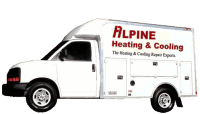
Takagi Tankless
Today more than ever before consumers are turning to tankless water heaters as a way to lower energy consumption and decrease utility expenses in general. That said keep in mind that this type of water heater requires a special type of venting in order to blow hot exhaust gas outside of the home as a way to dissipate heat. Different from conventional water heaters, tankless hot water heaters require unique and creative venting options.
Direct Vent Pulls Air From the Outside
Keep in mind that in many cases the installation of this type of water heater results in a more attractive and less expensive finished product. Perhaps the most important aspect of a tankless water heater is that it will save considerable space. Tankless water heaters can be vented in one of two ways. They can either be vented via a power vent or direct venting. A direct vent pulls air from the outside of the home and will typically have two vent openings used for exhaust and intake.
Outside Tankless Water Heaters
This kind of configuration is unique in that it allows a tankless unit to fit in a much smaller spaces than would otherwise be the case. Conversely, power vent type units only require that there be adequate exhaust venting available. That said, a power vent unit usually requires a larger area so that adequate volumes of air are available and so that normal combustion is assured. There are other types of units that are known as outside tankless water heaters. These are good because they can free up a lot of indoor space. Best of all, an outside unit requires no additional venting.
High Efficiency Levels
When installing a unit that does require outside venting remember that venting can be through a sidewall or roof or any other number of other unique venting options. Finally, there are units that are known as condensing tankless water heaters. These are a good choice because they can lower energy costs thanks to very high efficiency levels. With the lower cost of installation associated with nonmetal parts being used, a condensing tankless water heater may be the perfect choice for today’s modern homeowner. Contact Alpine Heating and Cooling today to learn more about Mount Vernon Washington HVAC systems and services with a proven record.

Good Airflow and Better Indoor Air Quality
Natural ventilation plays an important role in helping to keep your home fresh, healthy and clean. Simply stated, natural ventilation is created when fresh outdoor air is allowed to enter living spaces and flow freely. Natural ventilation does not require an air-conditioning unit or fans. Sometimes referred to as passive cooling, this kind of ventilation is completely free and highly effective in keeping any home looking and smelling fresh. Here are a few easy ways to improve natural ventilation in your existing home or even if you plan on building a new home.
Improved Air Movement
For example, choosing furnishings that are made of breathable materials such as wicker or bamboo can help to encourage improved air movement throughout your home. The very nature of this type of furniture allows for good airflow thanks to minimal heat retention and an overall airy construction. While this kind of furniture is frequently used outdoors it can easily be used indoors to create a unique and inviting look while improving overall interior airflow.
Improve Indoors Air Quality
Equally important is to get into the habit of opening windows frequently especially when the weather is nice. Opening windows is a great way to save energy used by electric fans and other types of air conditioning or cooling systems in your home. Keep in mind the fresh airflow can actually substantially improve indoor air quality. Those building a new home will find that proper window orientation can easily improve cross ventilation. This can be as simple as placing windows on north or south facing sides of the home. Smart design when building a home can greatly increase good airflow in all interior spaces.
Design of the Structure
Another great way of improving airflow when considering the design of a new home is to include transitional spaces throughout the design of the structure. This can include adding atriums, courts, balconies, patios and other types of open outdoor spaces that will help to encourage outdoor living and better airflow. Keep in mind that the advantages of maximizing natural ventilation cannot be overstated. Improved indoor air quality, reduced energy usage and a better overall indoor living experience are just some of the benefits of getting it right when it comes to natural ventilation in your residential home. Contact Alpine Heating and Cooling today for the best in Burlington WA HVAC services that get results.


